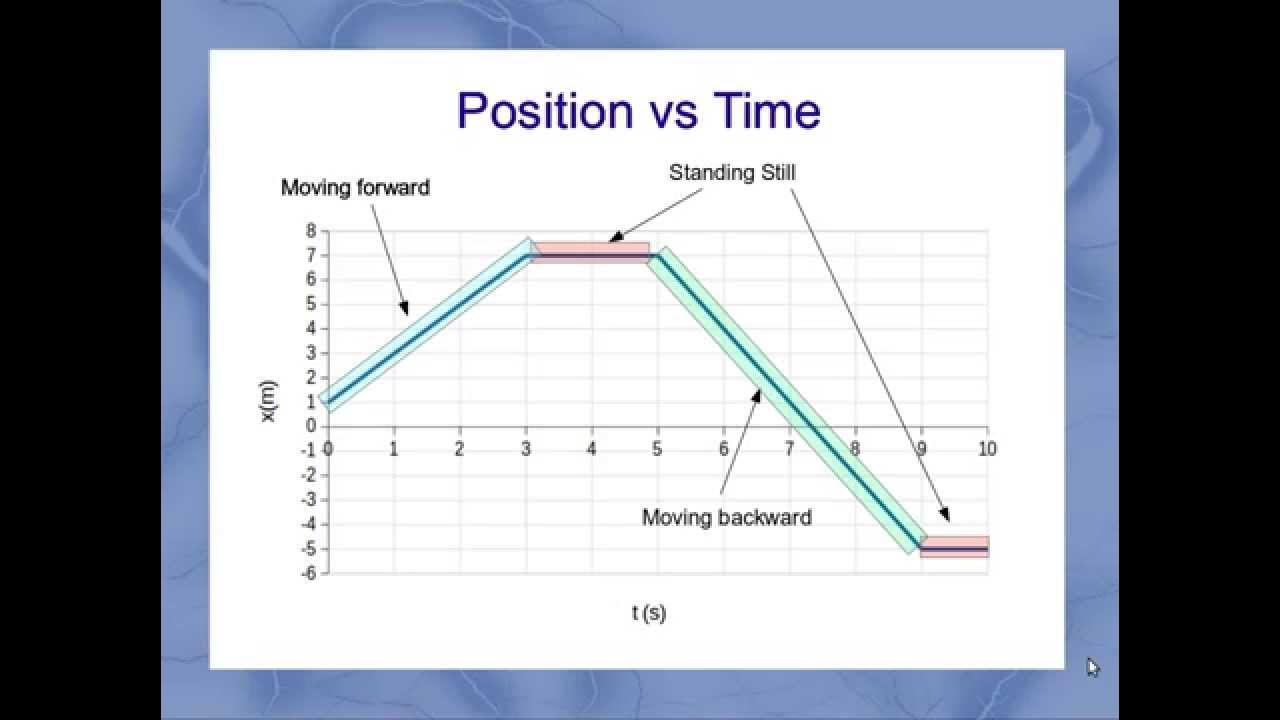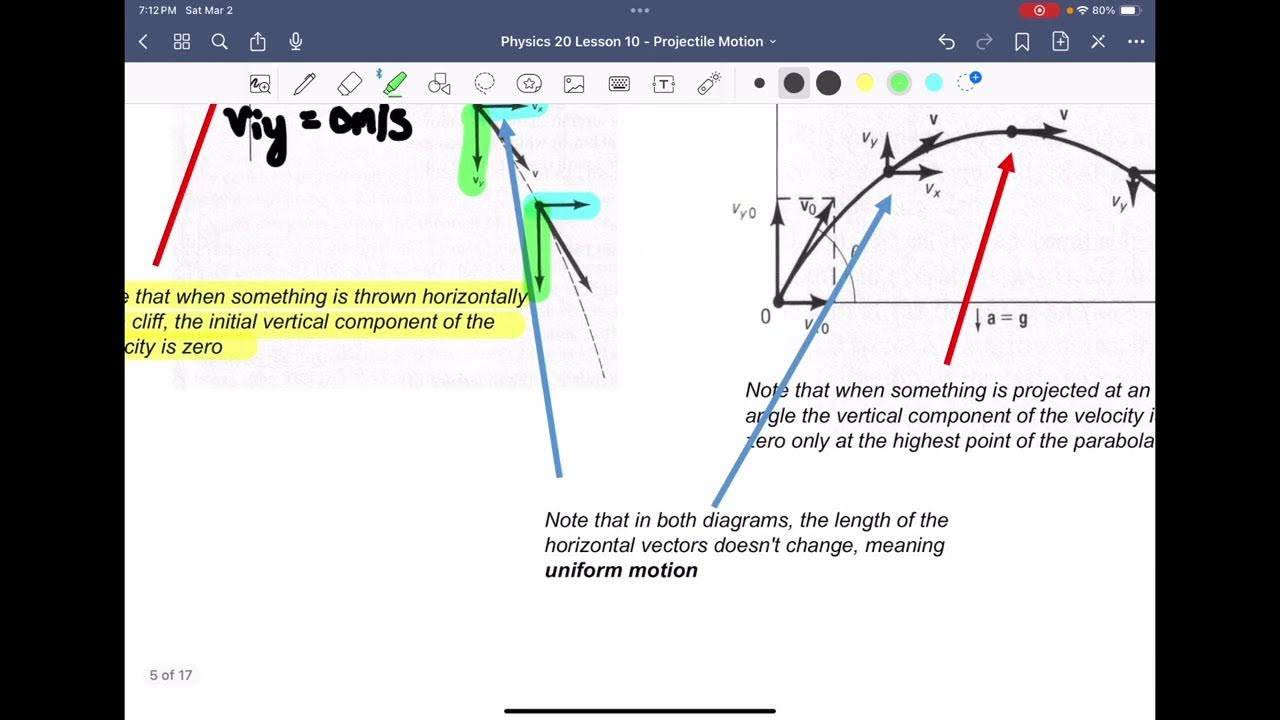Kinematics (AP Physics SuperCram Review)
TLDRThis script delves into the principles of kinematics, emphasizing their applicability to scenarios with constant acceleration. It clarifies the use of kinematic formulas for moving cars, balls rolling down hills, and projectiles, highlighting the importance of distinguishing between positive and negative vectors. The script also addresses the unique considerations for 2D kinematics, such as separating horizontal and vertical components and the constant horizontal acceleration of a projectile. It concludes with an exploration of motion graphs, illustrating how slopes and curvatures indicate velocity and acceleration, and the significance of understanding the direction of motion and acceleration.
Takeaways
- 📚 Kinematic formulas are applicable only when acceleration is constant.
- 🚗 Cars and balls moving with constant acceleration can be analyzed using kinematic equations.
- 🚫 Simple harmonic oscillators, like a mass on a spring, do not use these formulas due to varying acceleration.
- 🎯 Displacement is represented by (X - X_0), initial velocity by (V_0), and acceleration by (a).
- 🏞 Projectile motion at peak height has zero velocity in the y-direction but not zero acceleration; it's negative at 9.8 m/s^2.
- 💥 When an object hits the ground, its final velocity is not zero, indicating ongoing motion until impact.
- 📊 In 2D kinematics, horizontal and vertical motions must be analyzed separately with appropriate components.
- 🌐 For horizontal projectile motion, the acceleration is zero, meaning horizontal velocity (V_x) is constant.
- 📉 The acceleration in the y-direction during projectile motion is always negative, indicating a constant change in vertical velocity.
- 📈 The range formula is useful for projectile motion when the vertical displacement is zero, implying the start and end height are the same.
- 📊 Graphs of motion, such as position vs. time, show velocity as the slope, and changes in slope indicate acceleration.
- 🔍 On velocity vs. time graphs, the slope represents acceleration, and moving towards or away from the time axis indicates slowing down or speeding up, respectively.
Q & A
What are the conditions under which kinematic formulas can be used?
-Kinematic formulas can be used when the acceleration is constant, such as in the case of a car moving forward with a constant rate of acceleration or deceleration, or a ball moving down a hill with constant acceleration.
Why can't kinematic formulas be used for a simple harmonic oscillator?
-For a simple harmonic oscillator, the acceleration is not constant, which makes the kinematic formulas inapplicable.
What does the term 'X minus X naught' represent in kinematics?
-'X minus X naught' represents the displacement of an object in kinematics, where X is the final position and X naught is the initial position.
What is the initial velocity denoted by in kinematic formulas?
-The initial velocity in kinematic formulas is denoted by 'V naught'.
At the peak height of a projectile, is the velocity zero?
-No, at the peak height of a projectile, the velocity in the vertical direction is zero for a split second, but the horizontal velocity remains constant.
What is the acceleration of a projectile at its peak height?
-At the peak height, the acceleration is not zero; it is negative 9.8 meters per second squared, directed downwards.
How should the motion of a projectile be analyzed in 2D kinematics?
-In 2D kinematics, the horizontal and vertical motions should be analyzed separately. The initial velocity should be broken down into X and Y components, and the appropriate kinematic equations should be applied to each component separately.
What is the horizontal acceleration for a projectile in motion?
-The horizontal acceleration for a projectile in motion is always zero, meaning the horizontal velocity remains constant throughout its trajectory.
Is the acceleration in the y-direction zero at the peak height of a projectile?
-No, the acceleration in the y-direction is not zero at the peak height; it is always negative 9.8 m/s^2, indicating a constant downward acceleration.
What is the significance of the range formula in projectile motion?
-The range formula can be useful in projectile motion when the vertical displacement is zero, meaning the object ends at the same height it started from.
How can a position versus time graph help in understanding motion?
-A position versus time graph can indicate the velocity of an object, as the slope of the graph represents the velocity. Positive slope indicates forward motion, negative slope indicates backward motion, and zero slope indicates the velocity is zero. Changes in slope indicate acceleration.
What does the slope on a velocity versus time graph represent?
-On a velocity versus time graph, the slope represents the acceleration of the object. A positive slope indicates positive acceleration, a negative slope indicates negative acceleration, and a zero slope means there is no acceleration.
What does it mean if an object is moving towards or away from the time axis on a velocity graph?
-If an object is moving towards the time axis on a velocity graph, it is slowing down. If it is moving away from the time axis, it is speeding up, regardless of whether the acceleration is negative or positive.
Outlines
📚 Kinematic Formulas and Their Applicability
This paragraph discusses the conditions under which kinematic formulas can be applied, specifically when acceleration is constant. It covers scenarios such as a car moving with constant acceleration or deceleration, a ball rolling down a hill, and a simple harmonic oscillator where the acceleration varies. The paragraph also clarifies misconceptions about acceleration at the peak of a projectile's trajectory and emphasizes the importance of considering vectors' direction in 2D kinematics. It explains the separation of horizontal and vertical motion for projectile motion, noting that horizontal acceleration is zero, and vertical acceleration is consistently negative due to gravity.
📉 Understanding Graphs in Kinematics
The second paragraph focuses on interpreting graphs in kinematics, explaining how to analyze motion through position versus time and velocity versus time graphs. It describes how the slope of these graphs represents velocity and acceleration, respectively, and how to interpret positive and negative slopes. The paragraph uses an example graph to illustrate an object's motion, starting with constant velocity, slowing down, reversing direction, and eventually coming to a stop. It also cautions about misinterpreting negative acceleration as slowing down and positive acceleration as speeding up, depending on the context of the motion.
Mindmap
Keywords
💡Kinematic Formulas
💡Constant Acceleration
💡Displacement
💡Velocity
💡Acceleration
💡Projectile Motion
💡2D Kinematics
💡Range Formula
💡Graphing Motion
💡Acceleration Vector
💡Negative Acceleration
Highlights
Kinematic formulas can only be used with constant acceleration.
Examples of constant acceleration include a car moving forward at a constant rate and a ball rolling down a hill.
Simple harmonic oscillators do not have constant acceleration and thus cannot use these formulas.
At the peak height of a projectile, the velocity is zero, but the acceleration is not.
The acceleration at the peak of a projectile is negative, at 9.8 m/s², and is directed downwards.
The final velocity of an object before hitting the ground is not zero.
Vectors in kinematics can be positive or negative, and the negative sign is crucial for understanding motion direction.
For 2D kinematics, horizontal and vertical motions must be analyzed separately.
In 2D kinematics, the horizontal acceleration for a projectile is always zero, maintaining constant horizontal velocity.
The vertical acceleration in projectile motion is always negative 9.8 m/s², indicating a constant change in vertical velocity.
The range formula is useful for projectile motion with zero vertical displacement, meaning the start and end heights are the same.
Graphing motion involves understanding that the slope of a position-time graph represents velocity.
Curvature on a graph is a clear indication of acceleration.
On a velocity-time graph, the slope represents acceleration, where a positive slope indicates positive acceleration.
A velocity graph where the object moves towards the time axis indicates slowing down, while moving away indicates speeding up.
Understanding the direction of acceleration is essential, as negative acceleration does not always mean slowing down.
The transcript provides a detailed example of an object's motion, including starting, slowing, reversing, and maintaining constant velocities.
Transcripts
5.0 / 5 (0 votes)
Thanks for rating:





